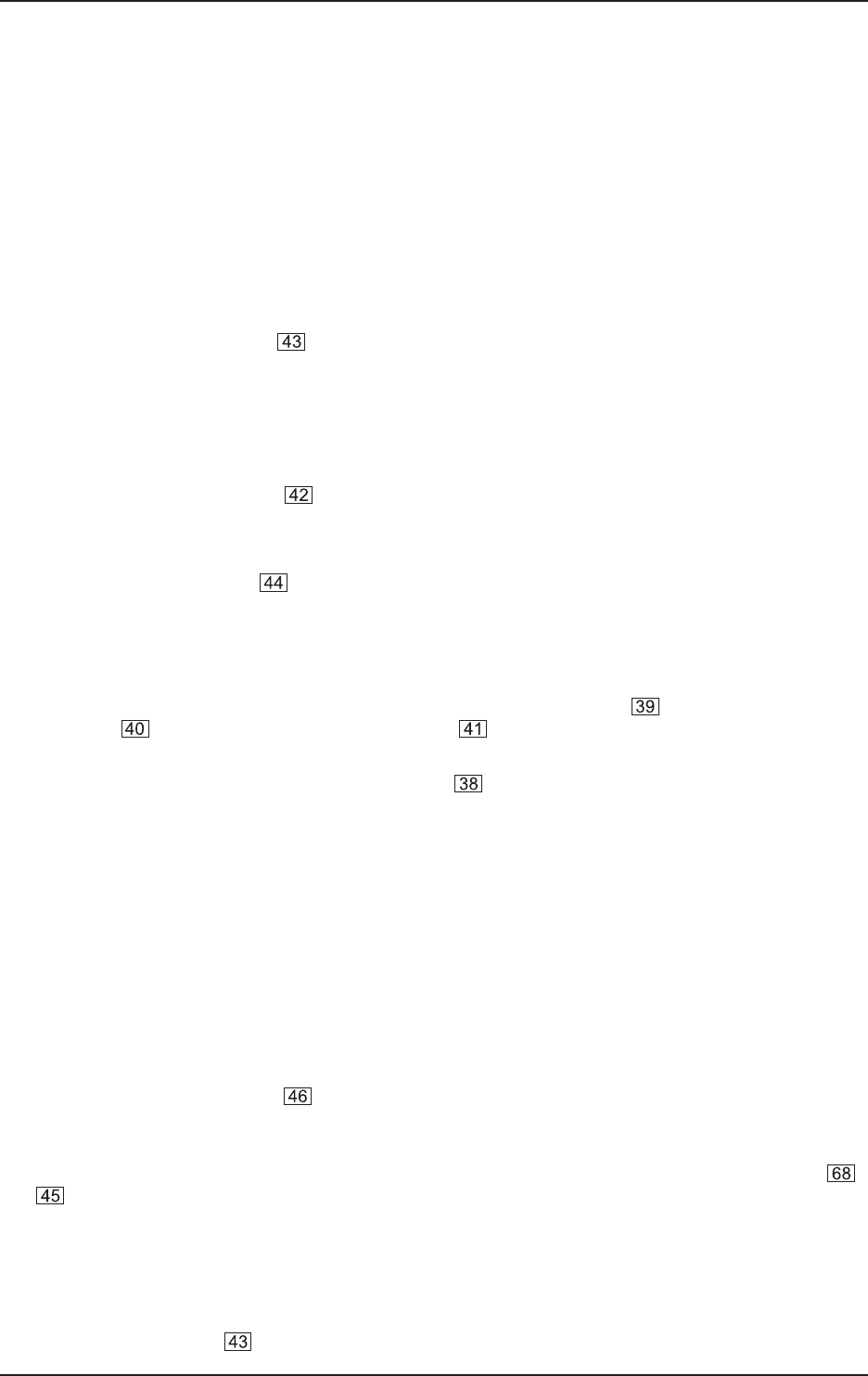
15
EURODESK MX3282A
+ There is no absolute reason why the send from aux 1 should feed into a processor whose
outputs are sent to the aux return 1. The processor could just as easily be patched into the aux
return 3, or even a pair of channels. For many purposes, however, it is sensible to set up a
default patch where the aux sends and returns correspond. It is logical to put your premier FX
units into the aux 1 and aux 2 loops, since these returns enable you to record to tape without
repatching.
+ Sometimes an engineer wants to narrow the stereo width of a reverb field. To do this you will
have to come back on channels, because they have full panorama facilities.
6.2 Monitoring
Though most of you will want to audition the main mix most of the time there are exceptions. These include
Solo/PFL and 2-TRACK playback . The bargraph meters follow whatever source is being auditioned (the
meters wont make much sense if more than one source is selected).
+ Altering what goes into the control room monitors does not affect the signal from the main mix
recording outputs. That offers to you the opportunity to do a quick solo during a mix whenever
you want without having to start again!
The MONITOR/CTRL LEVEL pot sets the level to the control room monitors. This is sourced post the
main mix stereo fader setting. Your fades couldnt be heard otherwise.
Dont rely on a single pair of loudspeakers to audition your mix. Youd better use a variety of different speakers.
Lastly, there is a MONO button , useful for checking the phase correlation and/or coherence of a stereo
signal. Again, this does not affect the main mix output.
6.3 Headphones
The headphones may be sourced from the monitor/control room mix , and/or from pre-fader
aux sends 1/2 or switchable pre/post aux sends 5/6 for artist cueing. Two headphones sockets are
provided on the back panel.
The headphone mix level is controlled by a LEVEL pot , and the gain is sufficient to drive headphones
directly. This is fine for a MIDI suite with overdub booth, but for the bigger studios headphone network using a
separate headphones distribution amplifier like the BEHRINGER POWERPLAY PRO HA4600 is recommended.
This can offer the added advantage of independent headphones level control for every performer.
6.4 Solo/PFL
Solo
Solo is short for Solo-in-Place, and is the preferred method for auditioning an isolated signal, or group of
signals. Whenever a Solo button is pressed, all unselected channels are muted in the monitors. Stereo panning
is maintained. The solo bus is derived from the output of the channel pans, aux sends, stereo line inputs and
subgroups, and is always post-fader.
PFL
Pressing the channel mode switch once disengages the stereo solo bus, and replaces it with a separate
mono PFL (Pre-Fader Listen) bus. Now any channel which is solo-ed, isnt. It is PFL-ed instead. PFL should
always be used for gain-setting.
The channel mode (PFL or Solo) is indicated by a pair of status LEDs (located below the bargraph meter ),
pot controls the solo level, which will normally be set to unity gain (center detent) to match the in-the-mix
level (see also the essential section 8: SETTING UP).
6.5 2-Track Input and Output
The 2-track input is on unbalanced RCA phono plugs, and is primarily made for auditioning mix playback from
tape. The 2-TRACK switch routes this signal to the control room monitors.
6. MAIN SECTION


















